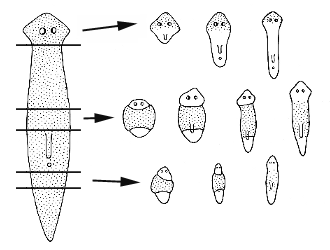Animal Structure and Function
I. Animal Nutrition
A. What are the nutritional requirements of animals?
B. Bioenergetics of animals sets limits on behavior, growth and reproduction.
1. What is metabolic rate? How is it measured?
What is a rate?
2. What are the two bioenergetic strategies employed by animals?
-endotherms have higher metabolic rates over the long run
3. Why is metabolic rate inversely related to body size?
4. The use of energy by different animals is shown in an energy budget.
- larger animals use more total energy than smaller animals (same sized endotherms>ectotherms)
-small animals have higher energy demands than large animals measured per unit mass
C. How do homeostatic mechanisms manage cellular fuel?
1. What is homeostasis?
2. Why is homeostasis important?
3. How is homeostasis maintained?
-regulation of blood glucose level
D. Food Processing in Animals
-s/v
1. Four stages of processing 2. Examples of different types of food processing III. Animal Circulation A. Why is diffusion alone not sufficient to transport
materials in a multicellular animal? time of diffusion ~= distance2 B. What are open and closed circulatory systems? 1. Open 2. Closed C. Adaptations in Vertebrate Circulatory Systems 1. What is a cardiovascular system? -heart (ventricles, atria) -vessels (arteries, veins, capillaries) -blood -interstitial fluid 2. How does differing metabolic rate help to explain the
evolution of cardiovascular systems? a. fish -one way circulation; two chambered heart b. amphibians -double circulation; three chambered heart c. mammals -double circulation; four chambered heart 3. Mechanisms of capillary exchange a. transport by membrane vesicle b. diffusion c. bulk flow III. Gas Exchange in Animals A. What gases are exchanged in animals? B. What factors influence that rate of gas exchange? Fick's Law (again) -structure of respiratory surface depends on size of organism
and whether it lives on land or in water C. What are the types of respiratory organs in large,
multicellular animals? 1. Skin breathers 2. Gills a. gills are an out-folding of the body surface b. How does countercurrent exchange enhance the exchange of
gases? 3. Tracheal systems 4. Lungs a. Where are the lungs found? b. What are lungs composed of? c. How do differences in the size and complexity of the lungs
help explain an animals metabolic rate? 5. How is breathing accomplished? a. Frog -positive pressure breathing b. Mammals c. Birds Why do birds have this adaptation? IV. Animal Reproduction A. What is the difference between asexual and sexual
reproduction? 1. Asexual Reproduction -fragmentation Fragmentation experiments with Planaria (flatworms) From: http://www.rzuser.uni-heidelberg.de/~bu6/Introduction03.html -Advantages? Disadvantages? 2. Sexual Reproduction b. What is fertilization? c. Fertilization can be internal or external d. Sexual reproduction requires specialized organs 